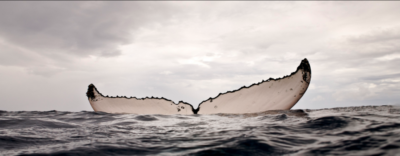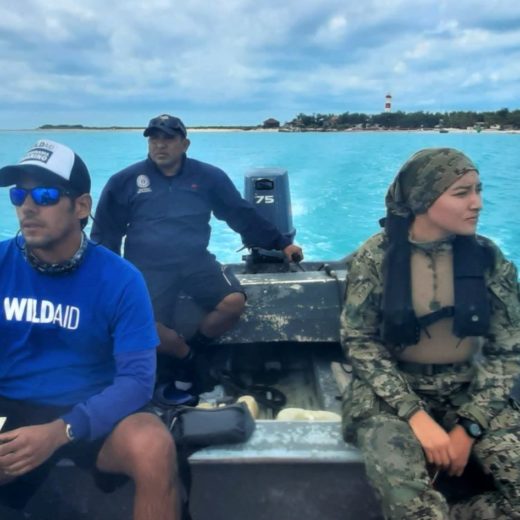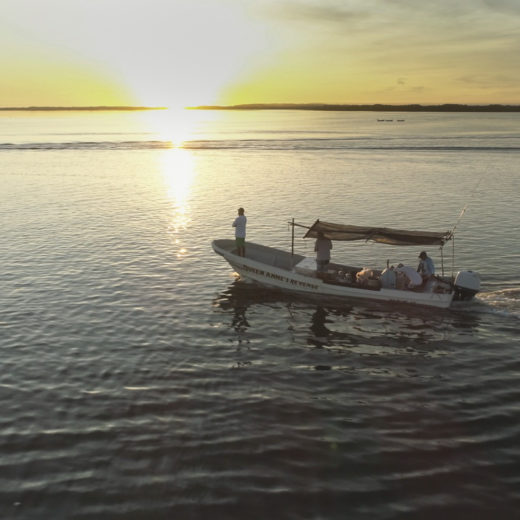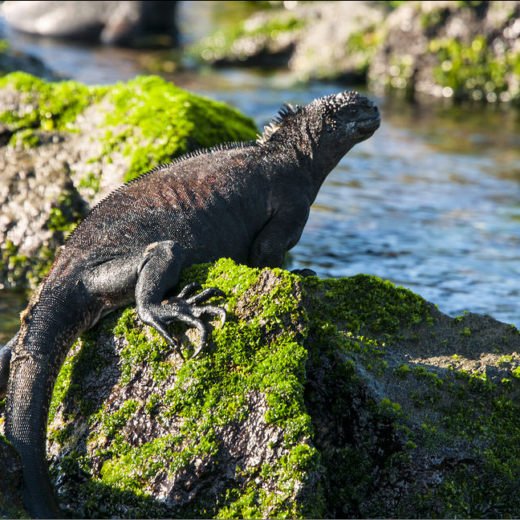
BY SILVIA SANCHEZ, WILDAID MARINE PROGRAM
In 2004, photographer Bryant Austin floated on the surface of the South Pacific observing a humpback whale and her calf. The five-week old, two-ton calf left his mother and glided within five feet of Austin, close enough that he put down his camera. The calf gracefully swam around him, giving the photographer his first close encounter with a whale.
From his book Beautiful Whale, Austin says, “For the first time, I could see the true colors, fine details, and subtle tones of the humpback whale; all of the elements that make them real. I never would have dared to swim this close to a whale. I wouldn’t even have imagined the prospect of photographing a whale that approached me within five feet on his own terms.”


Suddenly, he felt a gentle, but firm tap on his shoulder and turned around to meet the mother whale face to face. The tap had come from her two-ton, 15-foot pectoral fin, communicating a mild warning. Looking into her eyes, Austin was awed by the “gentle restraint” shown by these creatures in their interactions with him and the incredible body awareness they had.
Few people will ever experience this level of proximity to a whale and it could be dangerous for anyone but a professional to undertake. However, Austin wanted others to experience what he had. He believes that “our estrangement with nature will lead to the demise of many whale species.”
Thus, this young whale and his mother inspired Austin to start a seven-year journey to capture life-size images of whales and encourage people to protect them from human threats before they become extinct.
Last month, WildAid met with Austin at a talk and discussed his work. In describing his unique process, he said that to photograph them from three to six feet away—a necessity to capture the level of detail he needs for his work—he had to build trust and be patient enough to wait for the whales to approach him on their own terms, which they do only 5% of the time.
To fund his work, Austin sold all his possessions and quit his job. He traveled to the whales’ natural habitats in different countries including Tonga, Australia and Dominica. To dtae, he has created 25 life-size pictures of different parts of whales, such as their eyes and fins, including three full body portraits composed of 20 different pictures of a whale’s body. The largest printed is a 36 x 8-foot portrait of a sperm whale.


He first debuted his works in whaling countries, such as Japan and Norway, to inspire locals to address whaling and found positive and dramatic responses from the public and media that surpassed those of non-whaling countries. This led him to believe that “you can’t blame a whole population for the work of a few.”
While he wants to end whaling, Austin also wants to educate the public on the numerous other threats to cetaceans. These include more than 300,000 whale and porpoise deaths from entanglements in commercial fishing gear, ocean acidification, ship strike injuries, increasing ocean noise such as sonar, pollution and climate change which have affected whale migratory patterns.
Just recently, 27 pilot whales beached themselves in the Gulf of California and only three survived, although the cause is yet unknown. In Germany, a necropsy of 13 whales revealed that they had large amounts of plastic waste in their stomachs, including a plastic car cover and a shrimp fishing net. A study in Nature found that 67% of whale deaths are directly caused by human interaction.
Austin’s photography connects people with whales in a unique way and inspires change from within a community. At WildAid, we share Austin’s passion for marine conservation and ask our supporters to do their part to protect marine environments with small individual actions that can collectively make a difference for the fate of cetaceans. These actions can include: eating less seafood, refusing to purchase plastic products, writing your political leaders to save whales from extinction, and sharing Austin’s inspiring work with your friends and family. Greater awareness is needed now to change the fate of our oceans.
Stay in touch and get the latest WildAid updates.
SIGN UP


